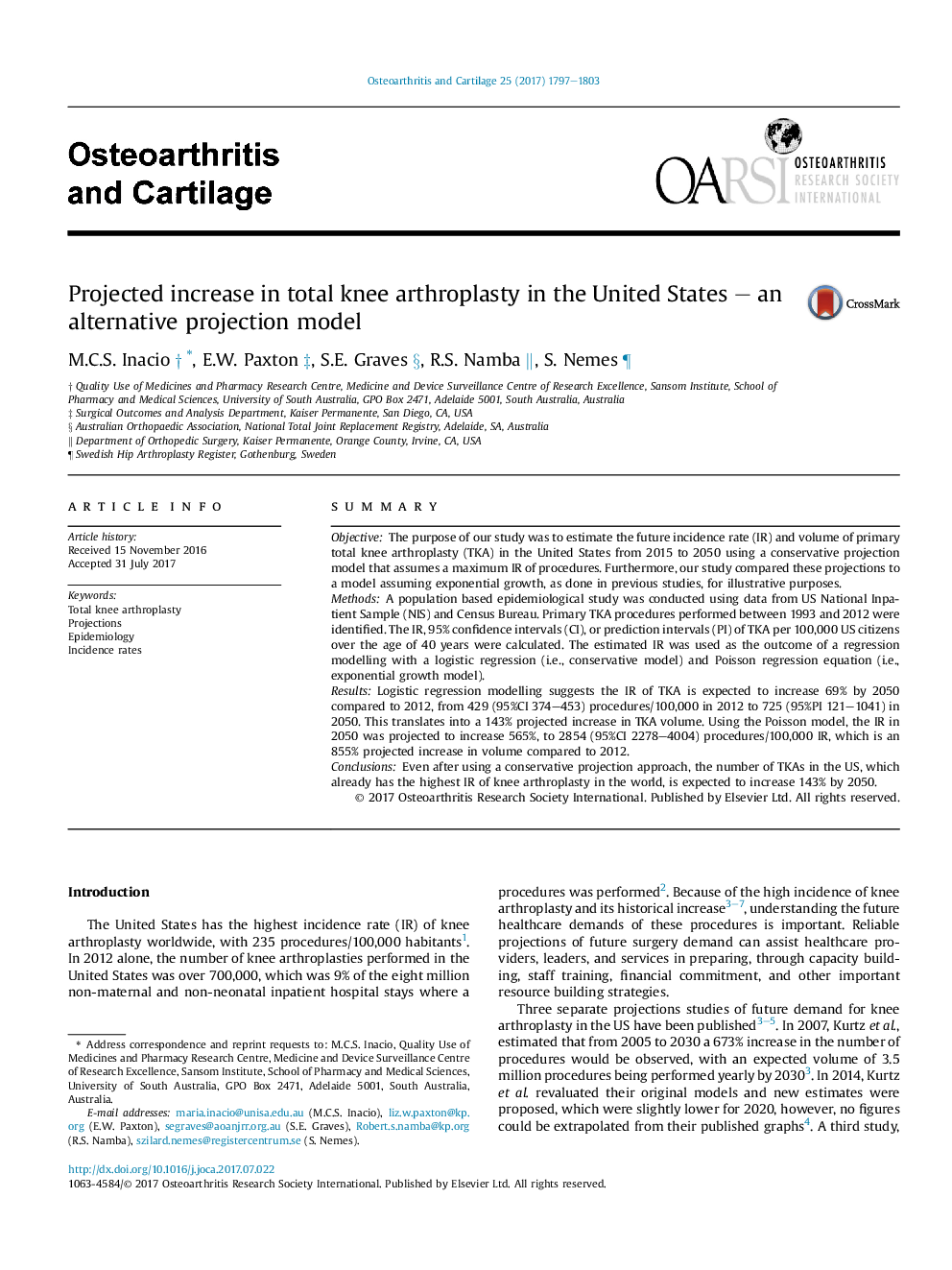| Article ID | Journal | Published Year | Pages | File Type |
|---|---|---|---|---|
| 5669187 | Osteoarthritis and Cartilage | 2017 | 7 Pages |
SummaryObjectiveThe purpose of our study was to estimate the future incidence rate (IR) and volume of primary total knee arthroplasty (TKA) in the United States from 2015 to 2050 using a conservative projection model that assumes a maximum IR of procedures. Furthermore, our study compared these projections to a model assuming exponential growth, as done in previous studies, for illustrative purposes.MethodsA population based epidemiological study was conducted using data from US National Inpatient Sample (NIS) and Census Bureau. Primary TKA procedures performed between 1993 and 2012 were identified. The IR, 95% confidence intervals (CI), or prediction intervals (PI) of TKA per 100,000 US citizens over the age of 40 years were calculated. The estimated IR was used as the outcome of a regression modelling with a logistic regression (i.e., conservative model) and Poisson regression equation (i.e., exponential growth model).ResultsLogistic regression modelling suggests the IR of TKA is expected to increase 69% by 2050 compared to 2012, from 429 (95%CI 374-453) procedures/100,000 in 2012 to 725 (95%PI 121-1041) in 2050. This translates into a 143% projected increase in TKA volume. Using the Poisson model, the IR in 2050 was projected to increase 565%, to 2854 (95%CI 2278-4004) procedures/100,000 IR, which is an 855% projected increase in volume compared to 2012.ConclusionsEven after using a conservative projection approach, the number of TKAs in the US, which already has the highest IR of knee arthroplasty in the world, is expected to increase 143% by 2050.
